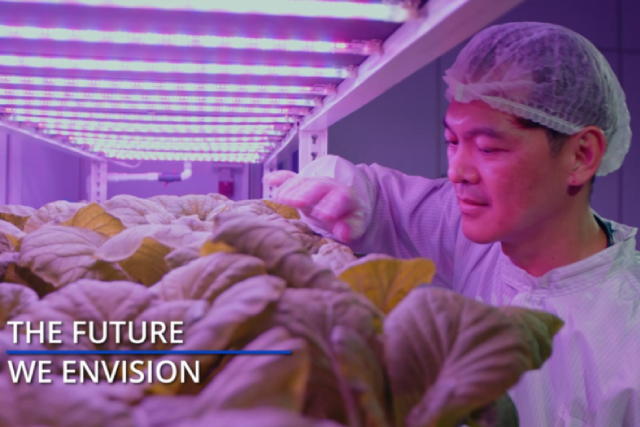
29 Jul 5 Ways To Avoid Common Hydroponic Gardening Pitfalls
Hydroponic gardening sounds like a dream come true: no soil, faster growth, less space required, and fewer pests. Whether you’re diving into hydroponics on your own or rolling out a system as part of a corporate urban farming initiative, it’s easy to get excited by the benefits. However, what many beginners don’t realise is that the setup and maintenance of a hydroponic system require attention to detail. Just because you’re skipping soil doesn’t mean you’re skipping challenges.
Things can and do go wrong, such as nutrient imbalances, poor water quality, or even the wrong choice of plants can derail the best intentions. Sometimes, it’s not even a major error that causes issues but a series of small missteps that build up over time. To avoid disappointment and waste, it helps to be aware of some of the most common pitfalls. Here are five you should definitely watch out for if you want your hydroponic setup to thrive.
1. Neglecting pH levels
In soil gardening, the earth itself can buffer a plant from small pH imbalances, but in hydroponics, you don’t have that luxury. Water becomes the plant’s entire environment, and pH directly impacts nutrient absorption. If your system’s pH is even slightly off, your plants may be starved of essential nutrients even if those nutrients are present in the water.
A pH level between 5.5 and 6.5 is ideal for most hydroponic setups. It’s crucial to test your water regularly and adjust with pH up or down solutions as needed. This may sound tedious at first, but it quickly becomes second nature. Having a reliable digital pH meter on hand can make your life a lot easier.
2. Using poor-quality water
Tap water in Singapore may be clean enough to drink, but for hydroponics, water quality goes beyond clarity. Chlorine, chloramine, and dissolved minerals can all interfere with plant growth. Some of these substances might kill beneficial microbes or cause nutrient lockout, especially in more sensitive crops like leafy greens or herbs.
To avoid this, many growers use filtered water or invest in a reverse osmosis (RO) system. While this might seem like an additional cost, it’s a worthwhile investment for long-term success. Once you control your water quality, many other variables in your system become easier to manage.
3. Overloading on nutrients
The important role of nutrients can’t be overstated, but that doesn’t mean more is better. Overfeeding is a common mistake among hydroponic beginners who assume that adding more nutrients will speed up growth. Instead, this can lead to “nutrient burn”, where plant tips turn brown or, worse, the roots get damaged.
The key is to follow the manufacturer’s guidelines for nutrient mixing carefully and to measure the electrical conductivity (EC) of your solution. This tells you how concentrated your nutrients are. It’s better to start on the lower end and increase gradually than to shock your plants with an overdose.
4. Poor airflow and lighting
Your hydroponic system might be set up beautifully, but if it’s sitting in a poorly ventilated room or under weak lighting, your plants are going to struggle. Just like in traditional gardening, light is food, and air is how plants “breathe”. Without adequate lighting, especially for fruiting plants, growth becomes leggy, leaves yellow, and yields are disappointing.
Likewise, stagnant air leads to problems like mould and pests. Ensure there’s good airflow around your plants using fans, and choose lighting that matches your plant type. LED grow lights are a popular choice for home and commercial hydroponic setups due to their efficiency and spectrum coverage.
5. Skipping system maintenance
One of the biggest misconceptions is that hydroponics is a “set it and forget it” system. This couldn’t be further from the truth. Pipes clog, roots overgrow, pumps fail, and algae blooms can develop in neglected systems. Routine cleaning and inspections are a must to keep things running smoothly.
It’s a good idea to set a maintenance schedule, like weekly checks for clogs and water levels, monthly cleaning of tanks and equipment, and periodic recalibration of meters. These simple habits prevent small issues from snowballing into major setbacks. Also, keeping a journal or log of plant growth, pH readings, and nutrient levels helps identify patterns and address problems quickly.
Thinking of going hydroponic?
Hydroponic gardening offers fantastic rewards, especially in urban environments like Singapore, where space is limited. But it’s not foolproof. Avoiding these five common mistakes can mean the difference between a lush green setup and one full of struggling plants. For those serious about success, choosing the right setup is just as important as maintaining it well.
If you’re looking to buy a hydroponic system in Singapore, it’s worth investing in reliable equipment and support from trusted suppliers who understand the local climate and water conditions. High-quality materials and thoughtful design can go a long way in reducing future headaches.
Conclusion
Hydroponics can be both rewarding and sustainable, but only when approached with care, planning, and attention to detail. As with any form of gardening, there’s a learning curve, but the payoff is well worth it.
For anyone considering setting up a hydroponic system, Vicplas offers a comprehensive range of quality products that are sustainable and safe for agricultural use. Whether you’re a home gardener or working on a larger project, you’ll find everything you need for a robust and thriving hydroponic setup.
